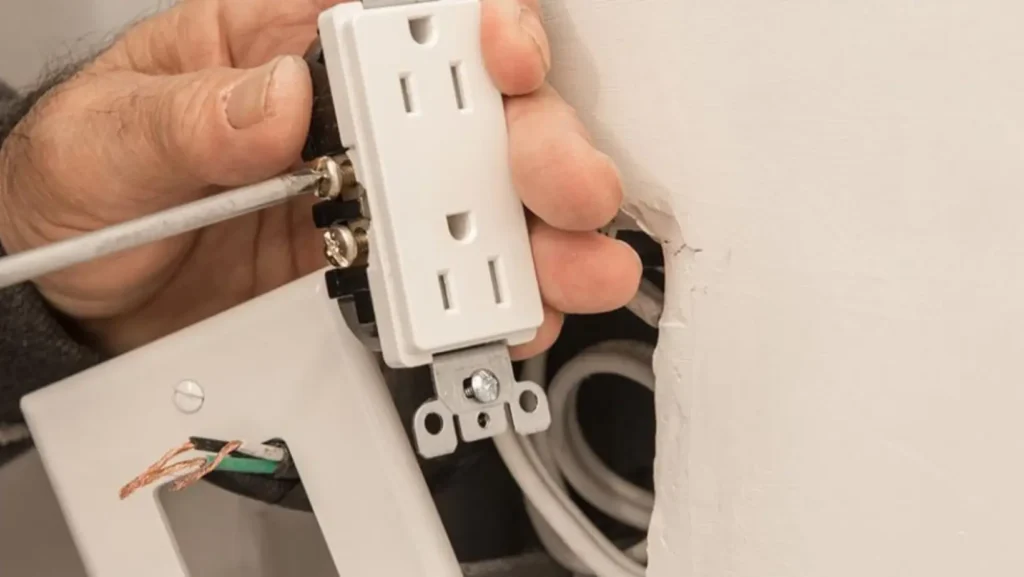
The United States National Electrical Code (NEC) updates its code standards every three years with new electrical guidelines. And from 1975, all new construction homes were required to install ground fault circuit interrupter (GFCI) outlets in any room or space where water is present, otherwise known as a ‘wet room’. Owners of older homes were also strongly advised to upgrade their electrical systems to include GFCI outlets in the recommended areas.
But to date, about 43 million American homes still do not have GFCI outlets installed in “wet rooms” according to reports by the Electrical Safety Foundation International (ESFI), and over 47% of current electrocutions could be prevented if older homes have proper GFCI protection.
If you’re unsure if GFCI outlets are required in older homes? This article discusses the importance of GFCI outlets in older homes and how to install GFCIs in your home.
Summary – GFCI outlets are not required in older homes unless the electrical system is being updated. However, it is a good idea to install GFCI outlets in bathrooms, kitchens, and laundry areas of a home in order to prevent electrical shocks and fire hazards and to ensure compliance with the latest building codes.
Do You Need GFCI Outlets in an Older Home?
Older homes like those built in the 1950s do not have GFCI receptacles. But since 1975, the National Electrical Code (NEC) has required every home in the United States to install GFCI outlets in rooms and areas that may come into contact with water or moisture.
So, if you own a home built before 1975, you may not find GFCI outlets, and you are not required to install them.
However, if you are replacing an outlet in an older home that is in a potentially wet location (such as a bathroom, kitchen, laundry room, or basement), you MUST replace it with a ground fault circuit interrupter (GFCI) outlet.
Also, if your older home’s electrical system lacks a ground wire, you will have to connect a wire from the ground lug on the GFCI receptacle to the common wire.
We strongly recommend upgrading your entire home wiring to include GFCI protection. It is for your household’s safety.

Why Are GFCI Outlets Important in Older Homes?
GFCIs are safety outlets installed in a home’s wiring system to protect people from electrical shock and injury. They look like standard outlets except for the “TEST” and “RESET” buttons.
If the GCFI outlet detects an imbalance in the electric flow, it automatically shuts down and cuts off the electricity supply to the connected devices.
It is clear from their mode of operation that GFCI outlets do more than just prevent electrical shocks. Other benefits of installing GFCIs in your home include the following.
Benefits Of Installing GFCI Outlets In Older Homes
Prevents Electric Fires

A power surge within your wiring system can easily spread to other areas, resulting in a fire outbreak. However, the GFCIs can help prevent the spread of an electric fire in your home by shutting down the electricity supply to the affected area.
Protect Your Devices from Damage
We often overload our electric circuits with electronic devices, which can result in a power surge and explosion. However, if you install a GFCI, your electronic devices will be safe in the event of an electric spark because the outlet will shut itself down before a high current can reach your device.
Ensures Compliance with Building Code:
Even if your older home doesn’t require GFCI outlets, it’s still a good idea to keep up with the latest building codes. This can help to increase the value of your home while also ensuring the longevity of your wiring system.
Where Are GFCI Outlets Required in a Home?
GFCI protection is required in many areas of the home, including bathrooms, kitchen (countertops), dining room, laundry and utility room, garage, crawl spaces, unfinished basements, outdoor receptacles, and anywhere within six feet of a sink, water heater, washing machine, and a wet bar.
How Do I Replace My GFCI Outlets?

Now that you understand the significance of installing GFCI outlets in your home, you may be wondering, “Can I replace the GFCI outlet myself?”
Well, installing a GFCI outlet is simple, especially if you have a basic knowledge of electrical wiring. But if you don’t, you should hire a licensed electrician to do the job for you.
You’ll need the following items for your GFCI installation;
- New GFCI outlet
- GFCI outlet Plate
- A flat head screwdriver to remove the outlet plate and old electrical outlet
- Phillips screwdriver to replace the GFCI outlet and tighten the connections.
- Flashlight if you’re working in a dark area.
Once you have the installation materials, follow these steps to replace your existing outlet with a new GFCI receptacle;
Step 1:
Switch off the power at the circuit breaker.
Step 2:
Take off the outlet cover.
Step 3:
Remove the Old Outlet from the outlet box using a Phillips screwdriver and disconnect the wires. Make a note of the connections (the wire colors), as this is critical to the proper operation of the outlet.
Step 4:
Install your new GFCI outlet in the same manner that you removed the old one.
Step 5:
Now, using the Phillips screws, secure the new GFCI outlet to the outlet box.
Step 6:
Install the new GFCI box cover that is contained in the pack, as the old outlet box will not fit.
Step 7:
Finally, turn on the power and use the “TEST” and “RESET” buttons to test your newly installed GFCI Outlet. Simply follow the manufacturer’s instructions on the device to test your outlet.
FAQs On Are GFCI Outlets Required In Older Homes
Are GFCI Outlets Required in the Bedroom?
GFCI outlets are not required in the living room, bedroom, or home offices. However, you should consider installing GFCI receptacles in areas of the bedroom and living room where you are likely to have more electrical activity or plug in more electronics.
How is a GFCI Different from a Circuit Breaker?
The GFCI and Circuit Breaker are two different electrical components that help to protect your home’s electrical wiring by cutting power in the event of a fault. However, the GFCI differs from the circuit breaker in that it is mainly used in “wet locations” such as kitchens, bathrooms, and swimming pools to protect people from being shocked if an electrical device comes into contact with water.

